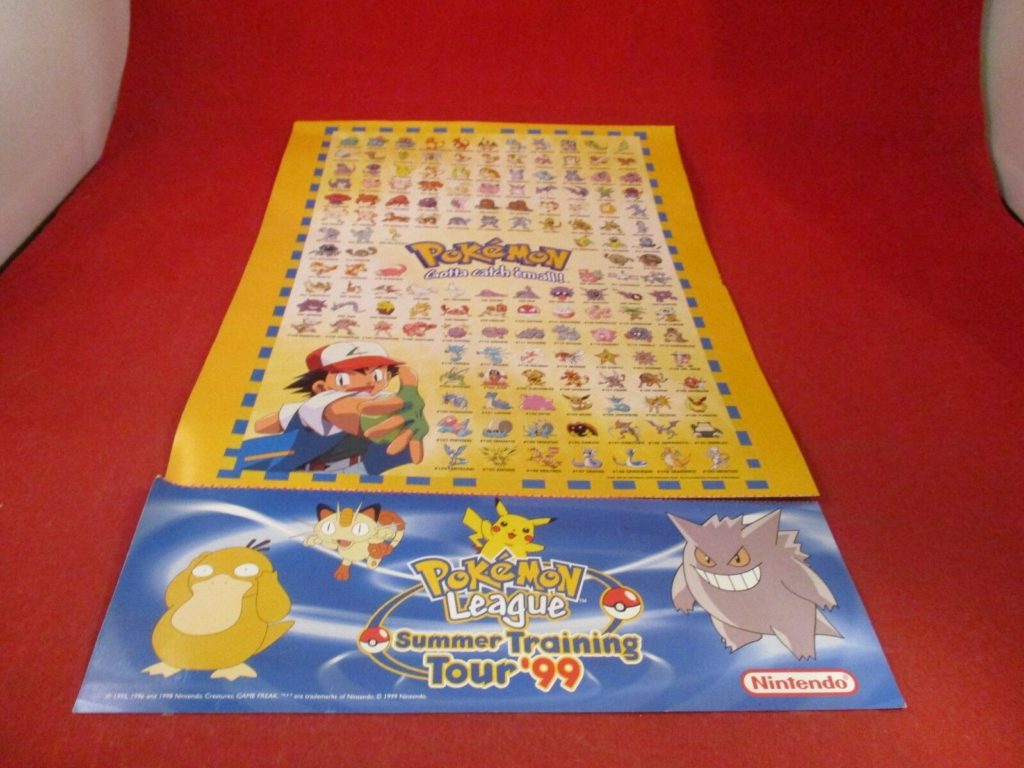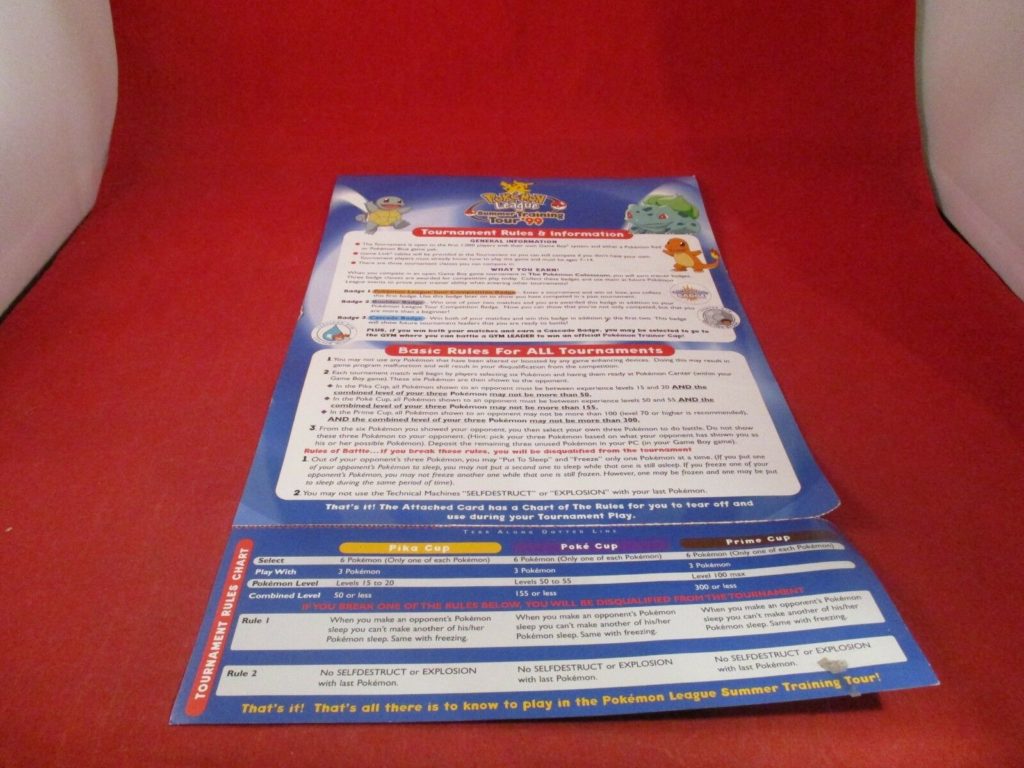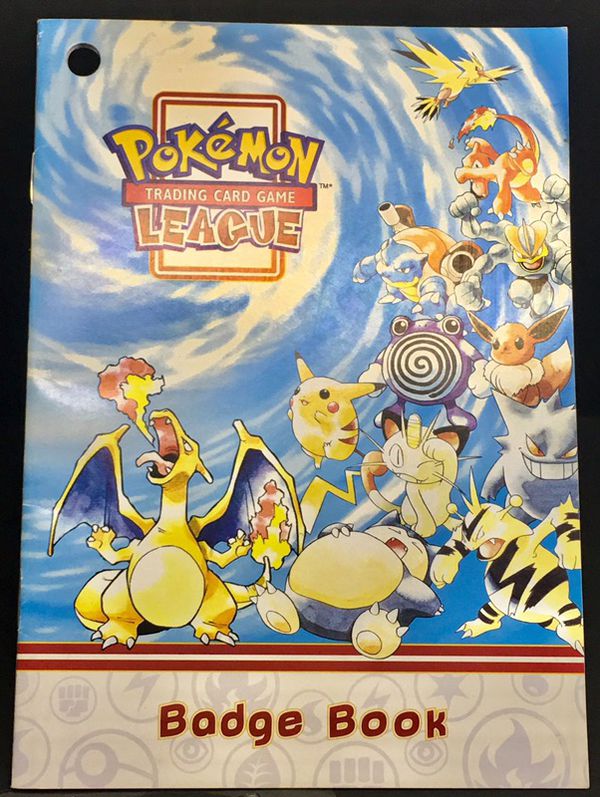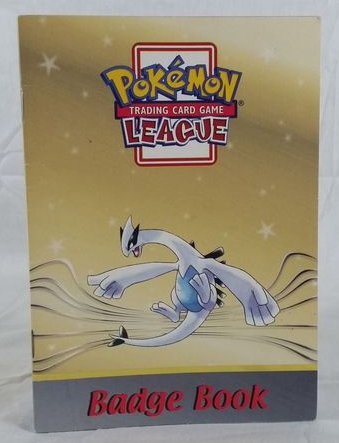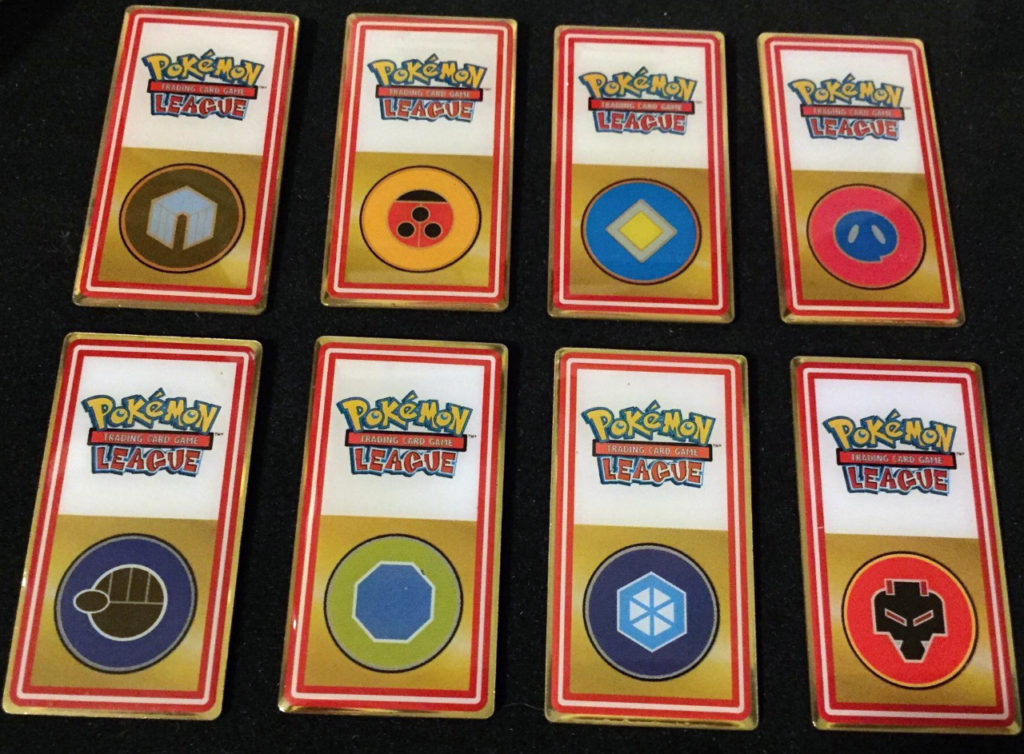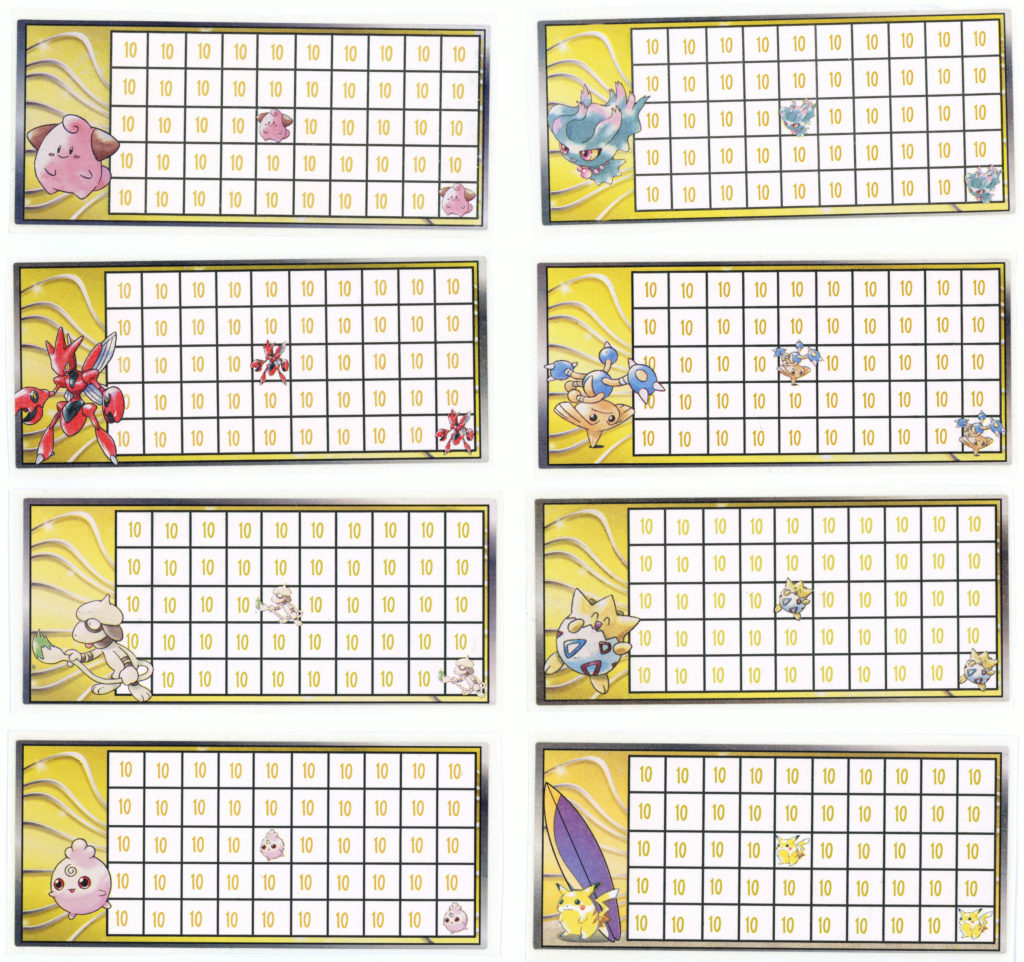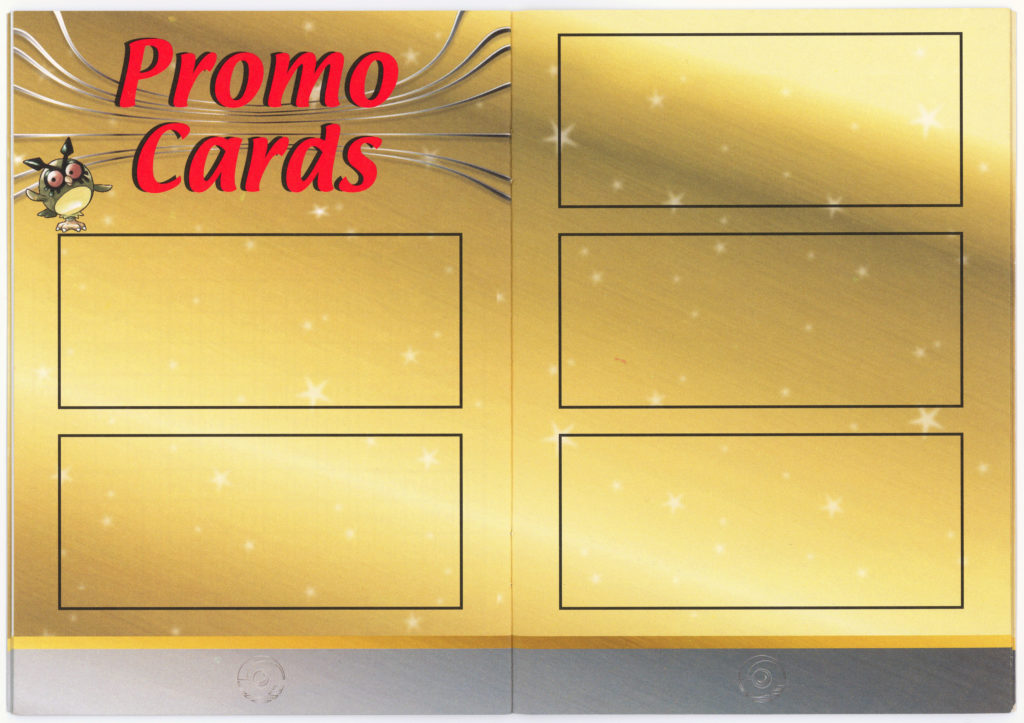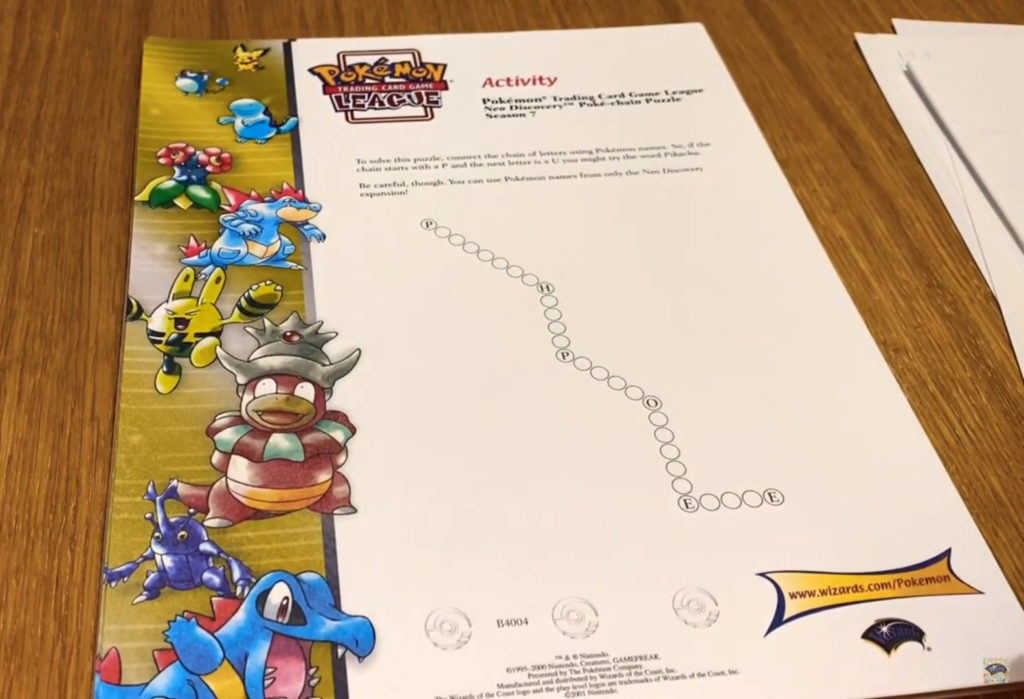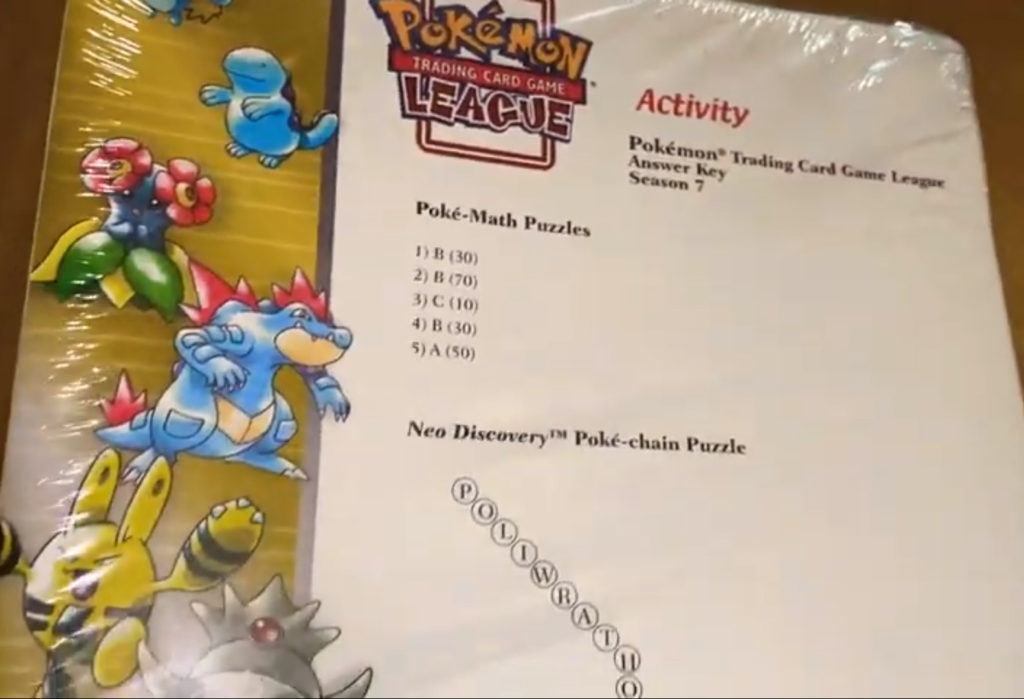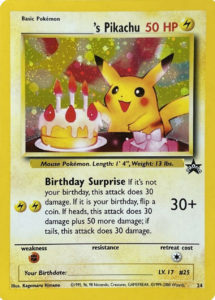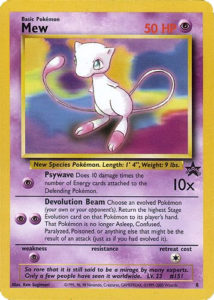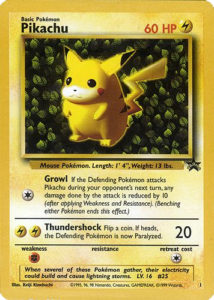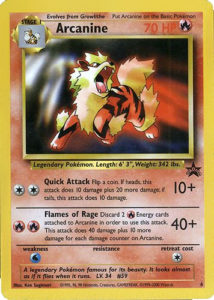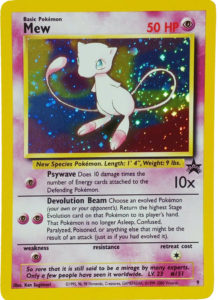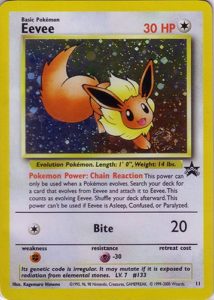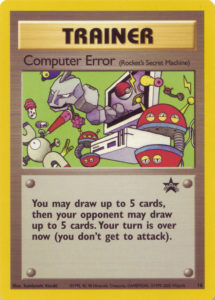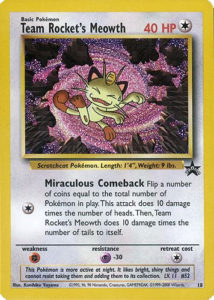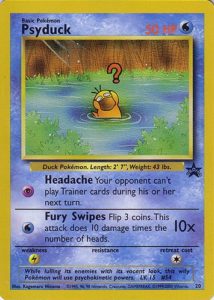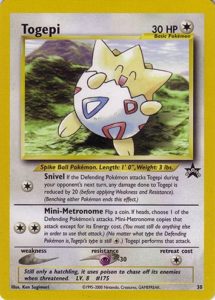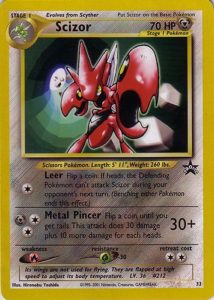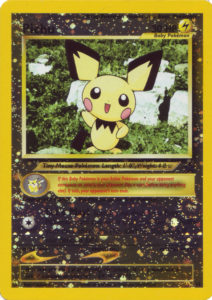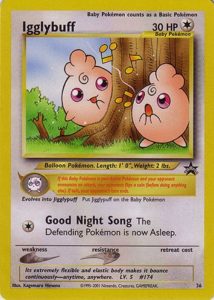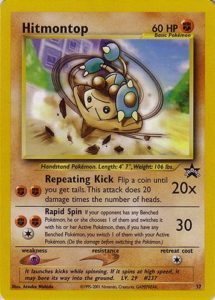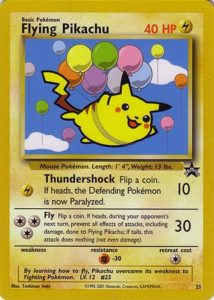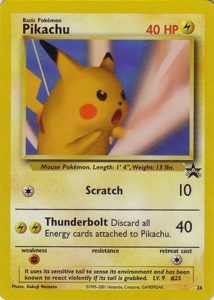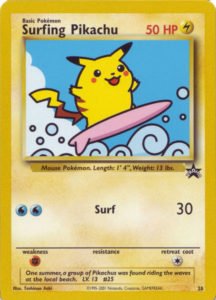Shortly after Wizards of the Coast acquired the American license for the Pokemon TCG in December 1998, plans were set in motion for organized play.
Wizards of the Coast were initially unsure if Pokemon would be plugged into their existing tournament system. This was known as the Duelist’ Convocation International (DCI) Tournament System, and it was already being used for their Magic: The Gathering TCG. Since the Pokemon TCG was more targeted at kids, Wizards thought that organized play would not be of any interest to such a young audience. However, this belief was quickly debunked, and Wizards set about testing out an organized play system.
Prototype Leagues & Trainer Decks A/B
In March 1999, “prototype”, or beta leagues were tested at participating local game shops and Toys “R” Us stores. Organizers (known as Gym Leaders) at each store were sent copies of “Trainer Deck A” or “Trainer Deck B”. These were meant to get organizers familiar with the game, and provide a deck for organizers to play against other players.
The distribution of these decks was quite limited. Stores only received Trainer Deck A, while Trainer Deck B was never officially distributed by Wizards of the Coast. Instead, mainly Trainer Deck Bs were found in warehouses at a later date. This is why many copies of Trainer Deck B are still sealed, while it is comparatively much harder to find sealed copies of Trainer Deck A. Each deck was themed after one of the first 2 Gym Leaders in the generation 1 Game Boy games.
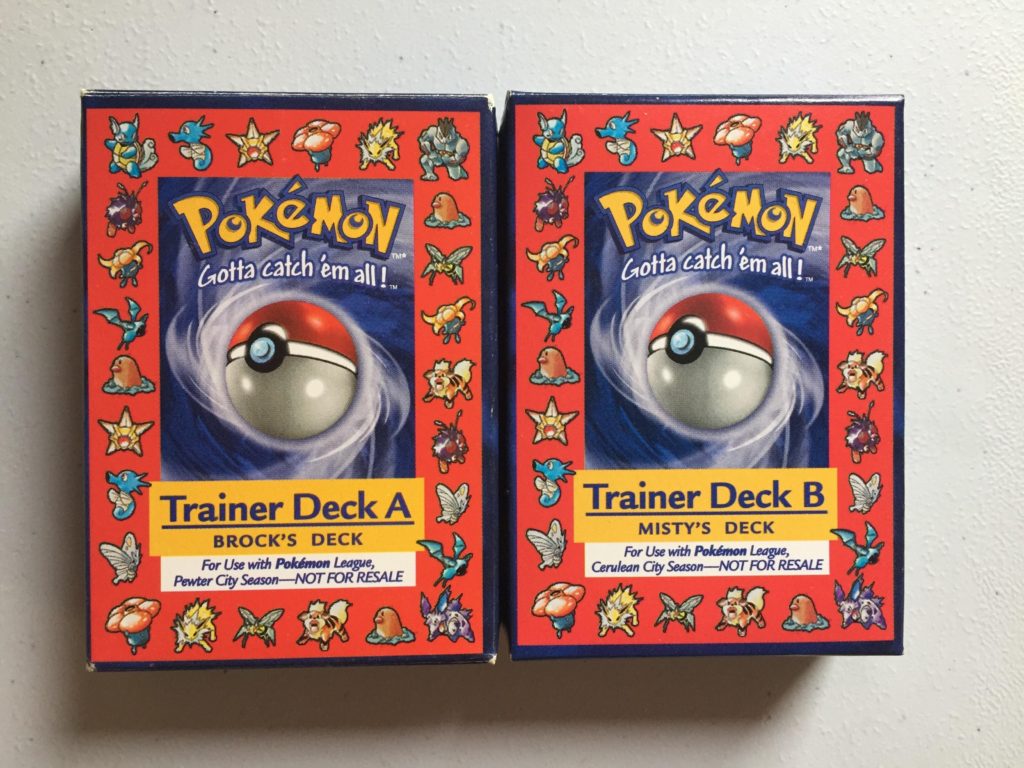
The reverse side of each deck box is identical save for the Deck title. It reads:
Training decks are designed as tools for the Gym Leader to use to enhance the experience of the League Participants.
These decks will allow players to experience the fun of playing against some of the greatest Gym Leaders from season to season as they work to become the greatest Pokémon trainers in the world.
This box contains 60 ready-to-play tradable game cards for use with the Pokémon League.
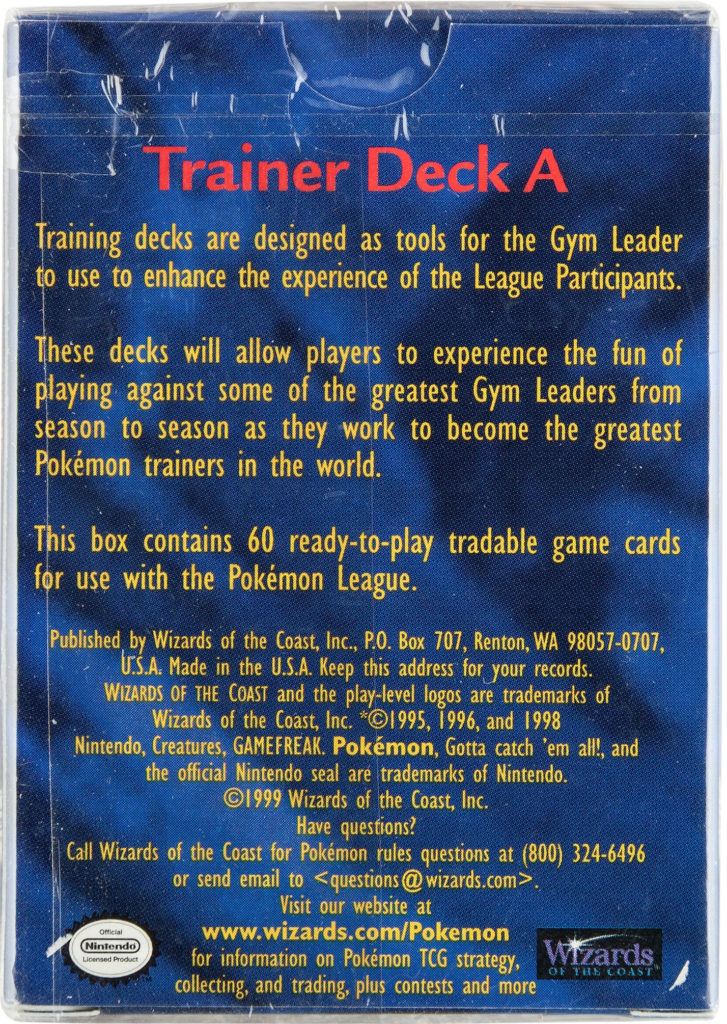
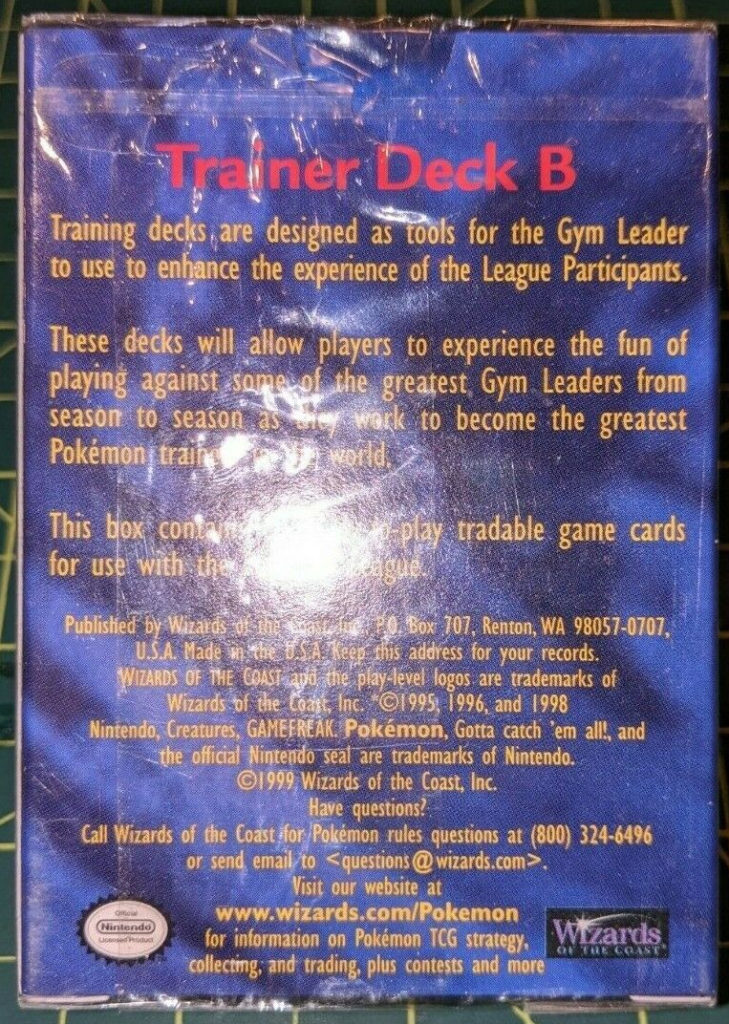
The deck boxes were also much smaller than they initially appear–each one is the size of a standard poker deck.

Each deck contained cards from the Base Set with identical front to their unlimited counterparts, but the backs of each are red-bordered and have “Trainer Deck A” or “Trainer Deck B” printed on them.


Both decks also each featured a card that was originally holographic in the Base Set, but was non-holo in these decks. Since this was meant as a prototype / demo product, the whole deck was likely printed on the same sheet, which explains the lack of holofoil cards.
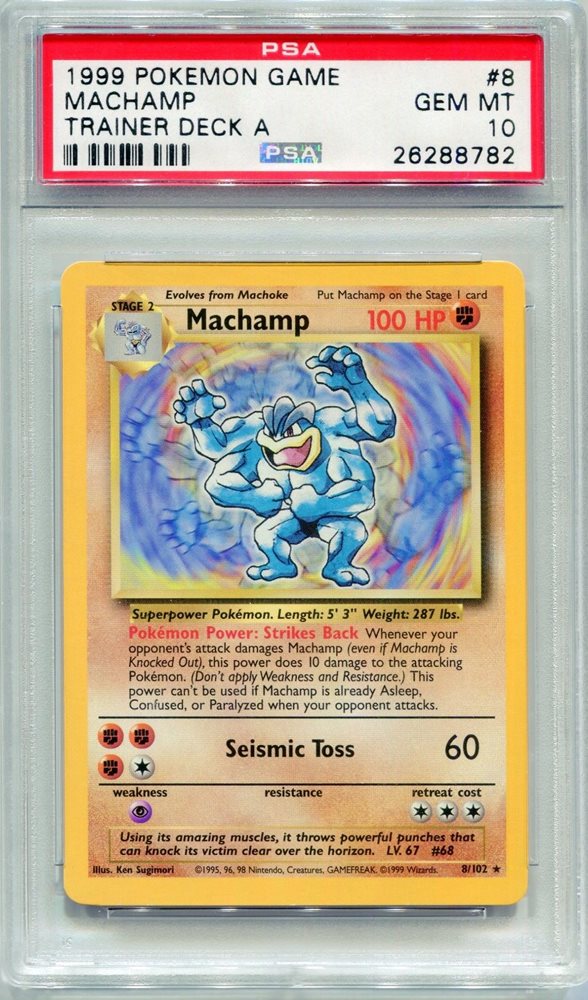
Trainer Deck A “Brock’s Deck” list:
- Machop x4
- Machoke x2
- Machamp x1
- Onix x4
- Sandshrew x4
- Rattata x4
- Raticate x2
- Defender x4
- Super Potion x2
- Potion x4
- Switch x2
- Fighting Energy x27
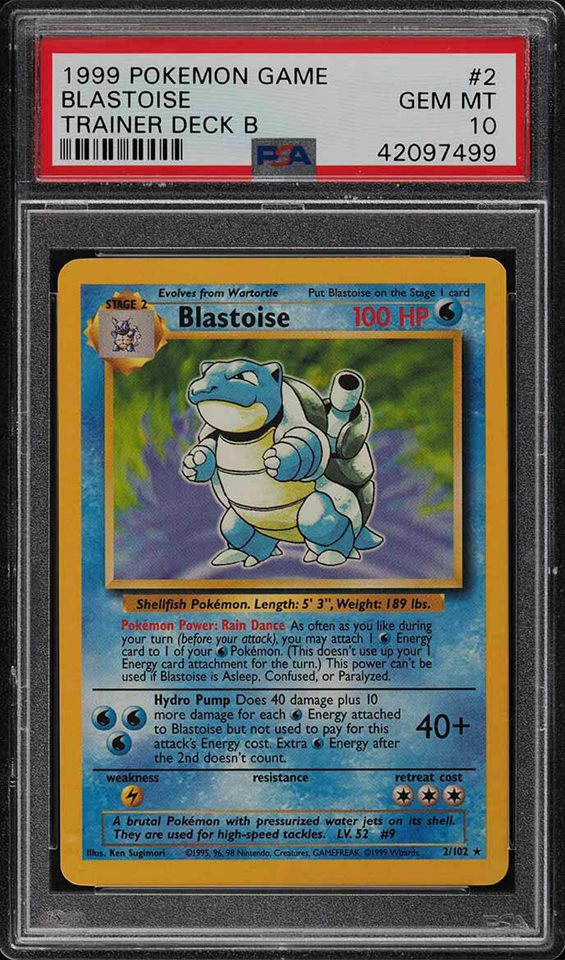
Trainer Deck B “Misty’s Deck” list:
- Squirtle x4
- Wartortle x2
- Blastoise x1
- Seel x4
- Staryu x4
- Starmie x3
- Pidgey x4
- Pidgeotto x2
- Computer Search x1
- Switch x3
- Energy Removal x3
- Pokemon Trader x2
- Water Energy x27
These prototype leagues proved to be successful, paving the way for the Pokemon League organized play system.
Pokemon Leagues Launch & Summer Mall Tour
Pokemon Leagues officially started in June 1999 when the DCI Tournament system started running for it. To coincide with this, Nintendo of America announced a nationwide mall tour to raise awareness, called the “Pokemon League Summer Training Tour”. The mall tour started off at the Mall of America in Minneapolis, Minnesota on July 10, 1999.
The 19-city tour lasted until September 12, 1999. It featured opportunities for kids ages 7 to 14 to participate in both Game Boy and TCG tournaments. Participants received a Jigglypuff promo that would be later distributed with the Pokémon: The First Movie Soundtrack.
The mall tour continued on to Milwaukee, Chicago, Kansas City (MO), Salt Lake City, Portland, San Francisco, Sacramento, Los Angeles, San Diego, Indianapolis, Cincinnati, Detroit, Memphis, Dallas, Jacksonville, Charlotte, Bethesda (MD), and New York/New Jersey.
Leagues would eventually be held in the following locations:
- All Wizards of the Coast Stores
- Select Gamekeeper stores
- All Books A Million Stores
- All Toys R Us stores in US
- All Hastings Stores
- All Media Play/On Cue stores
- Select Premier Hobby/Game stores
League Structure
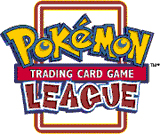
The Pokemon League was broken down into years, with each year featuring multiple “seasons”. Seasons were 6-8 weeks long. Each week, there were 1-2 nights per week that players could attend. Players were given a “badge book” when joining a League for the first time. This book recorded their progress throughout the year.
Each season of the league featured additional promos and badges being added to the League’s distribution, and also additional Player Activities.
Year 1 Badge Book
The first badge book featured instructions for Pokemon League participants, as well as pages for tracking each event in the league’s season. It also included blank pages to affix various earned stickers to.
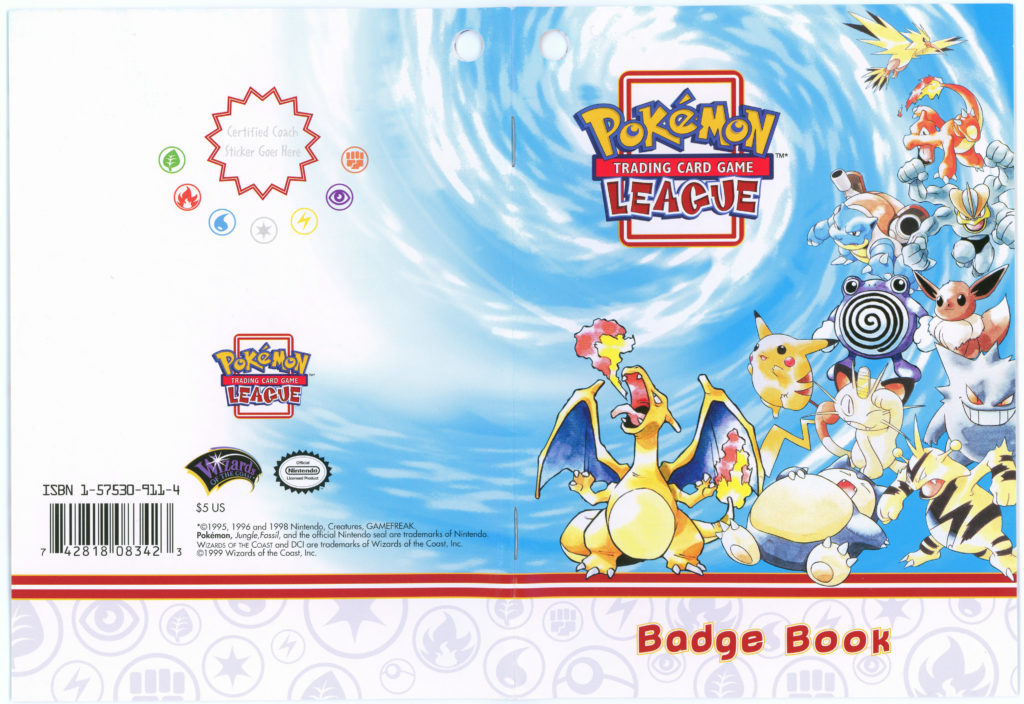
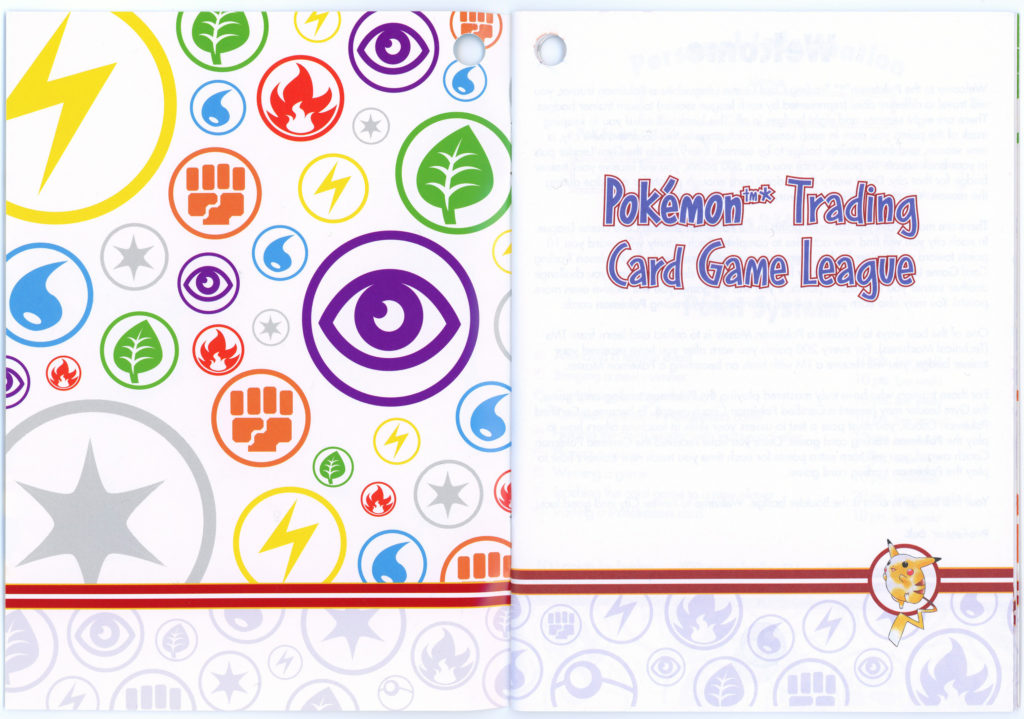
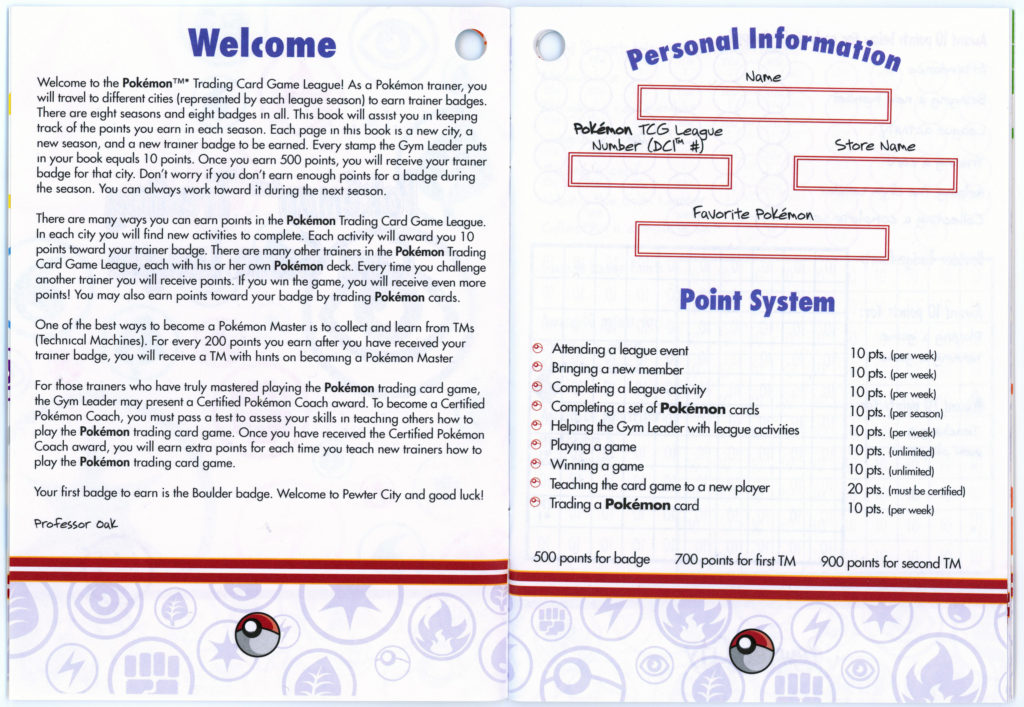

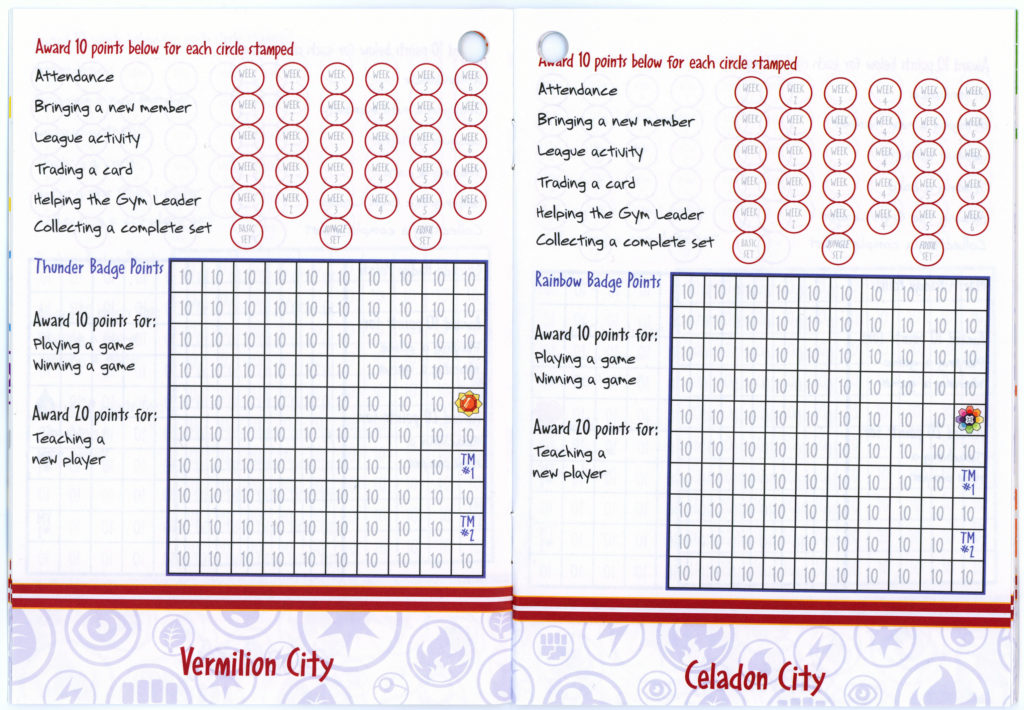
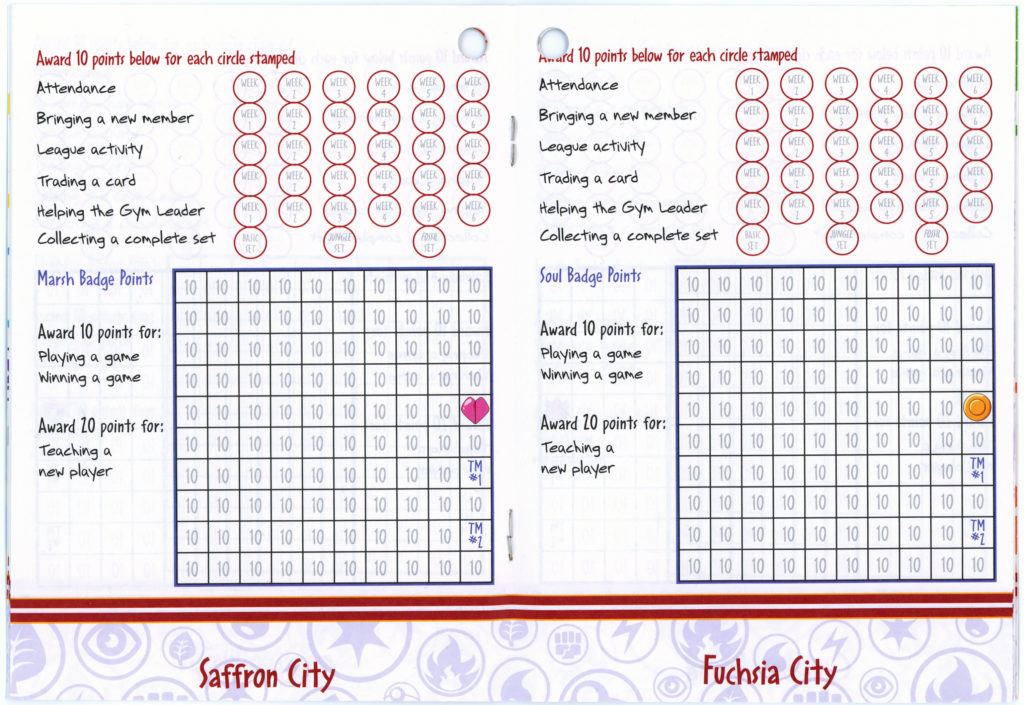
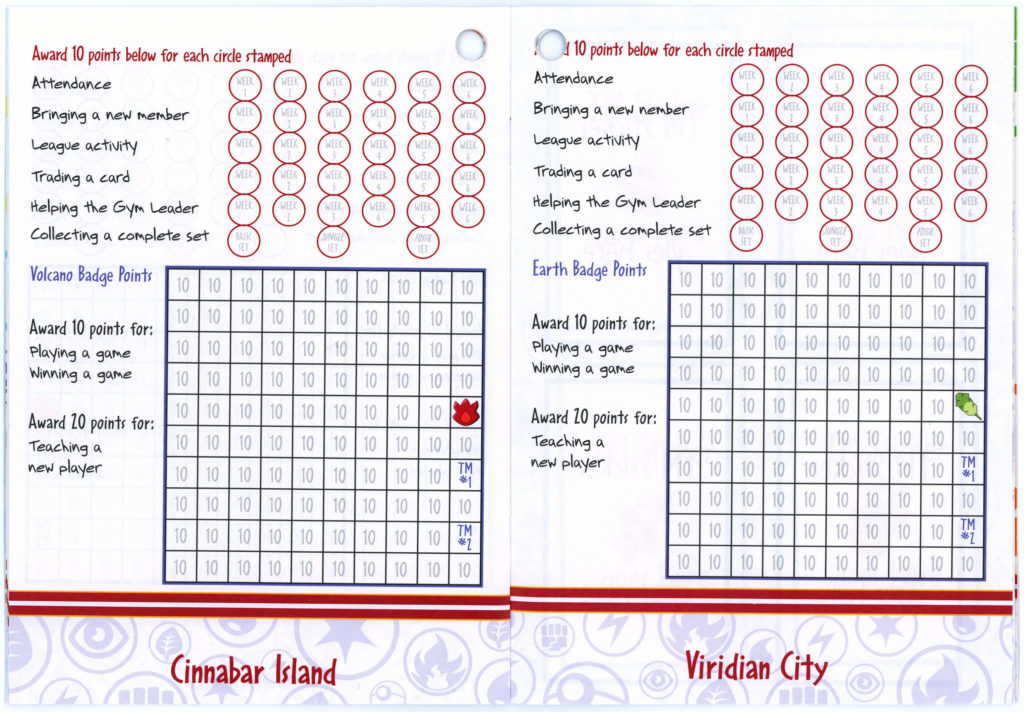
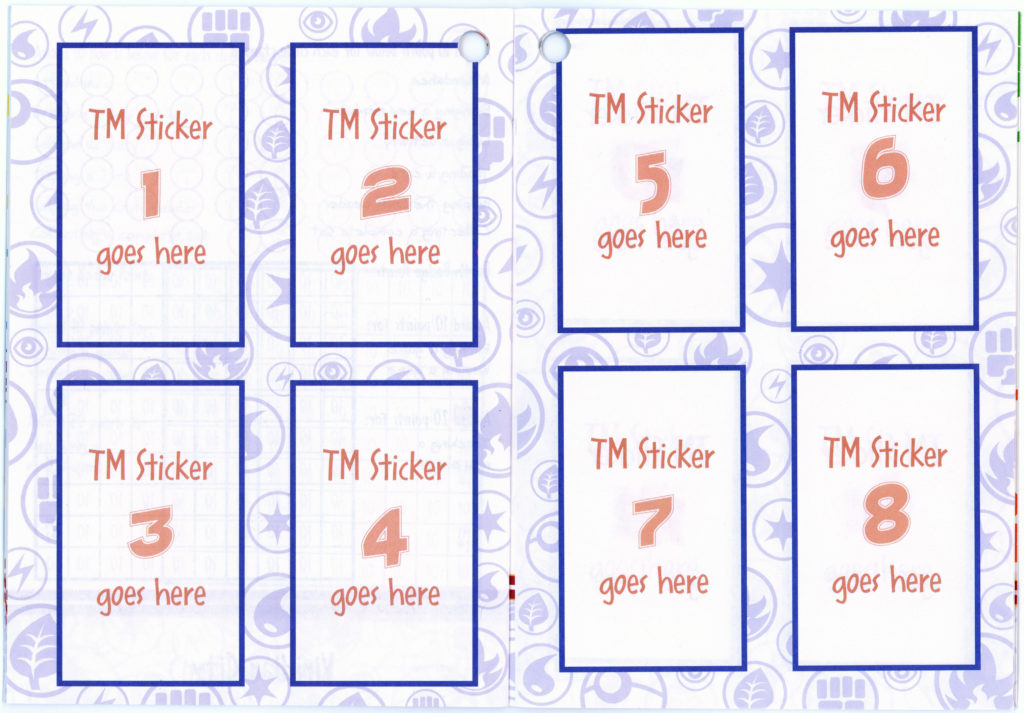
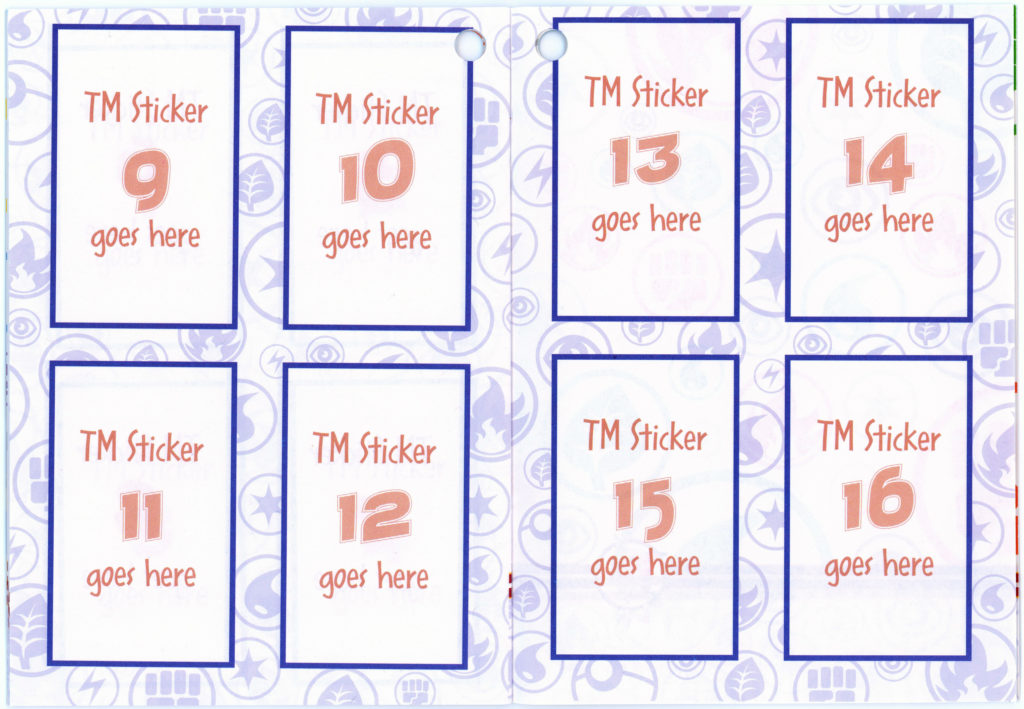
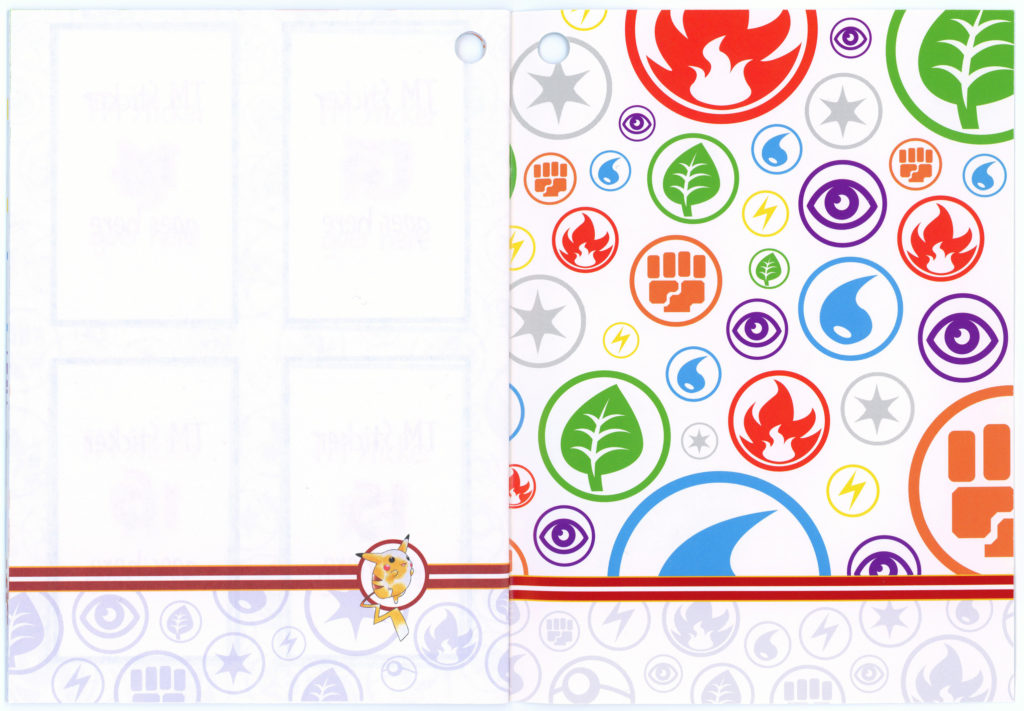
Year 2 Badge Book
In the second year of the Pokemon League, the badge book was updated to also include spots for gym badge and promo card stickers. It featured a new gold and silver theme to welcome players to the second Pokemon generation.
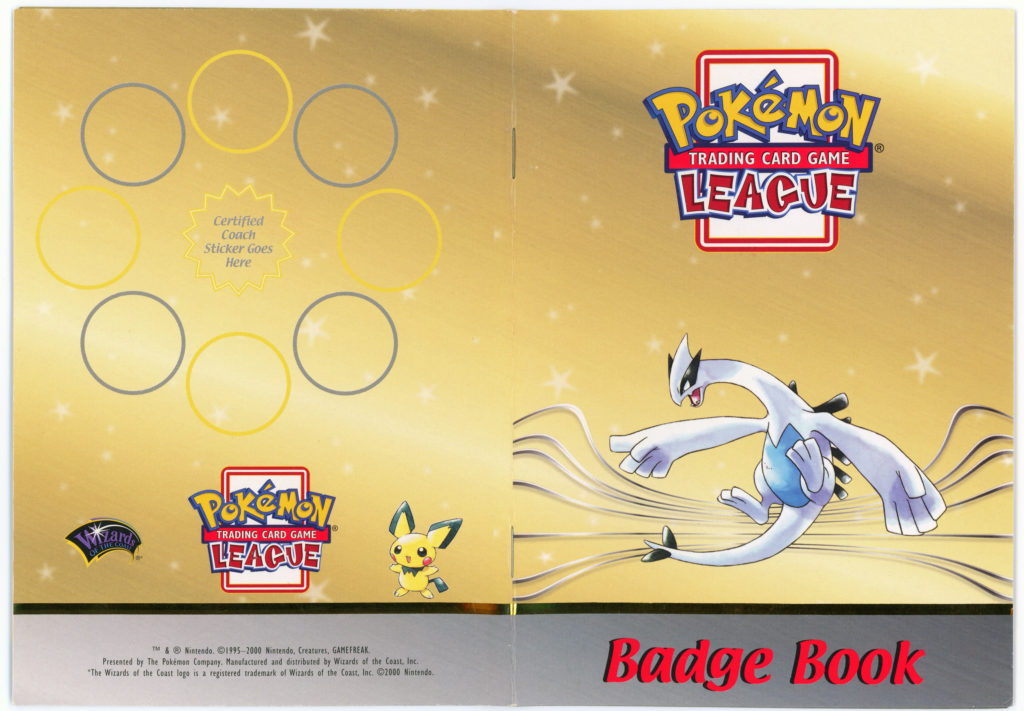
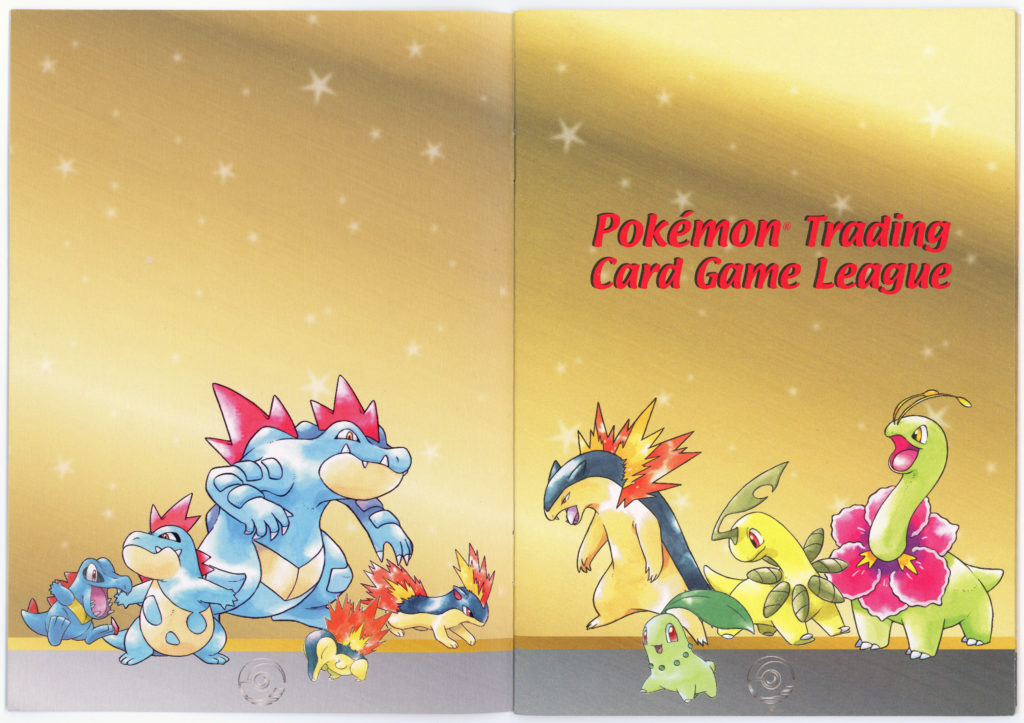
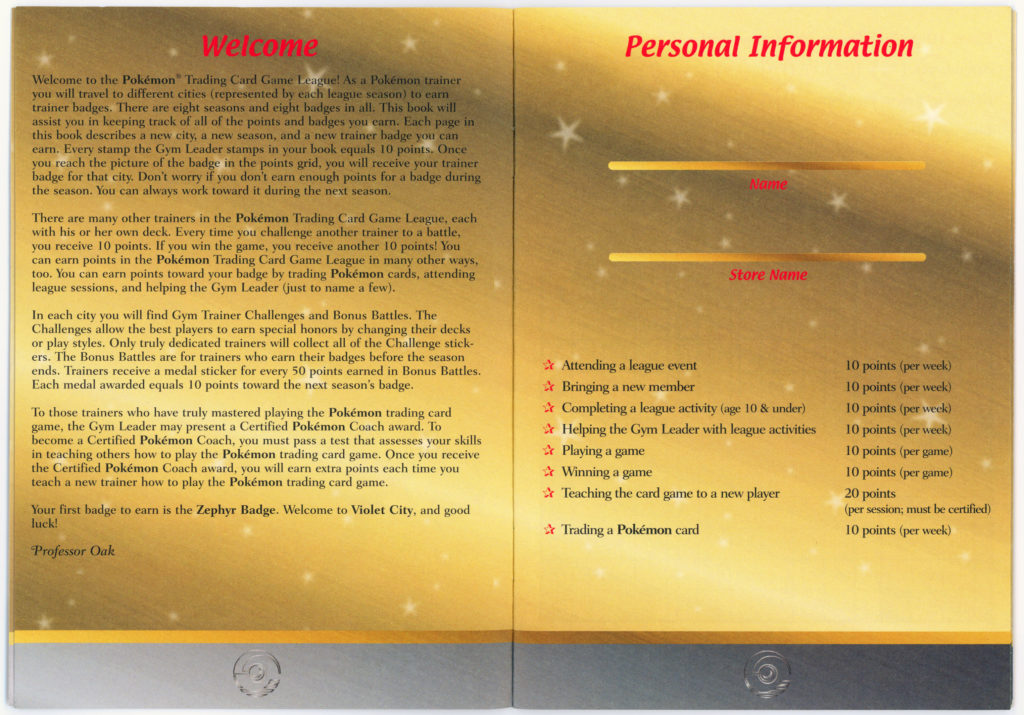
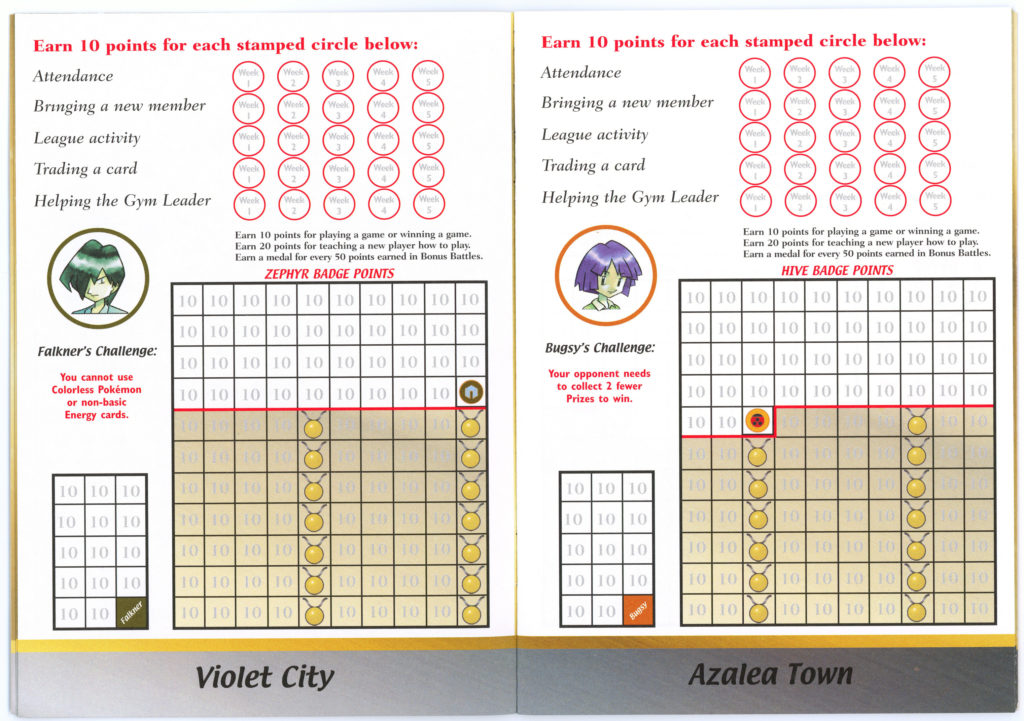
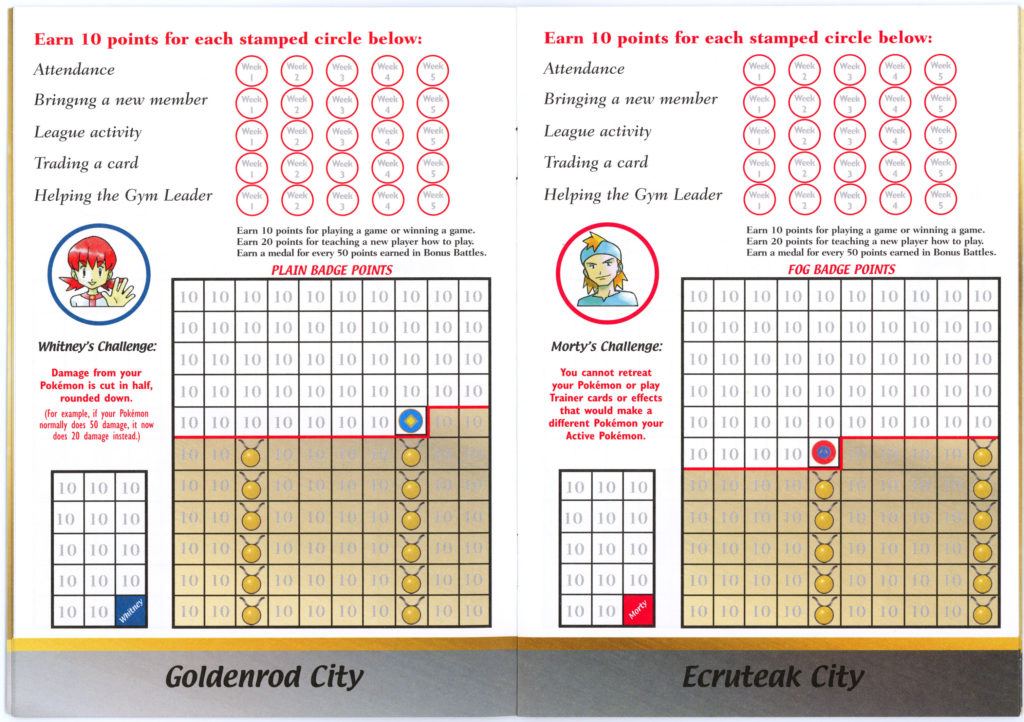

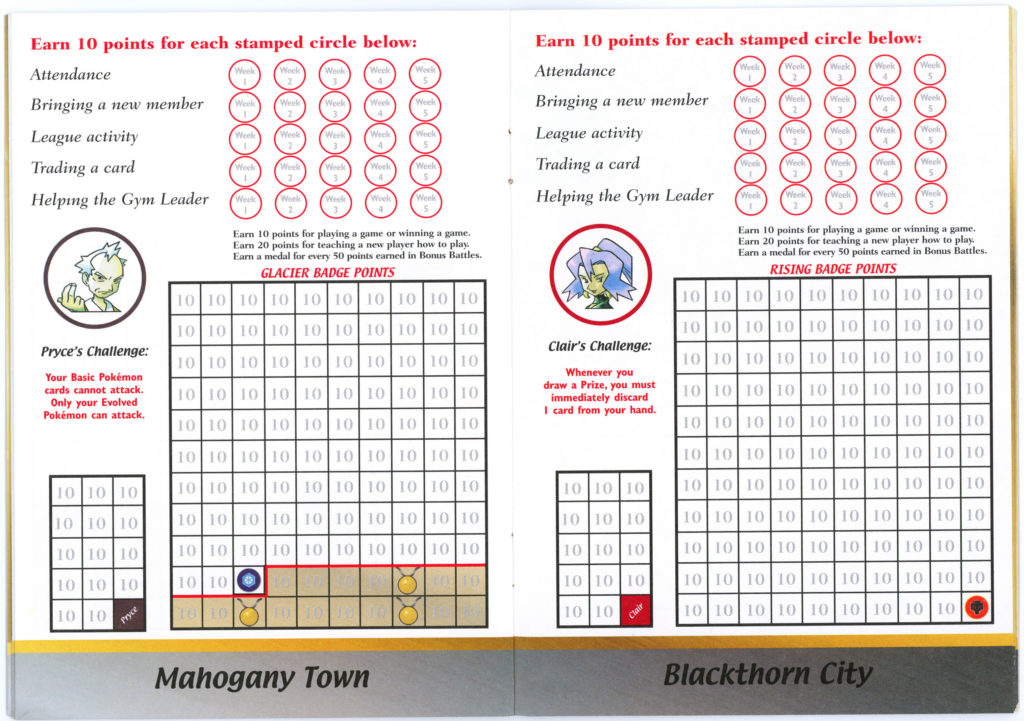
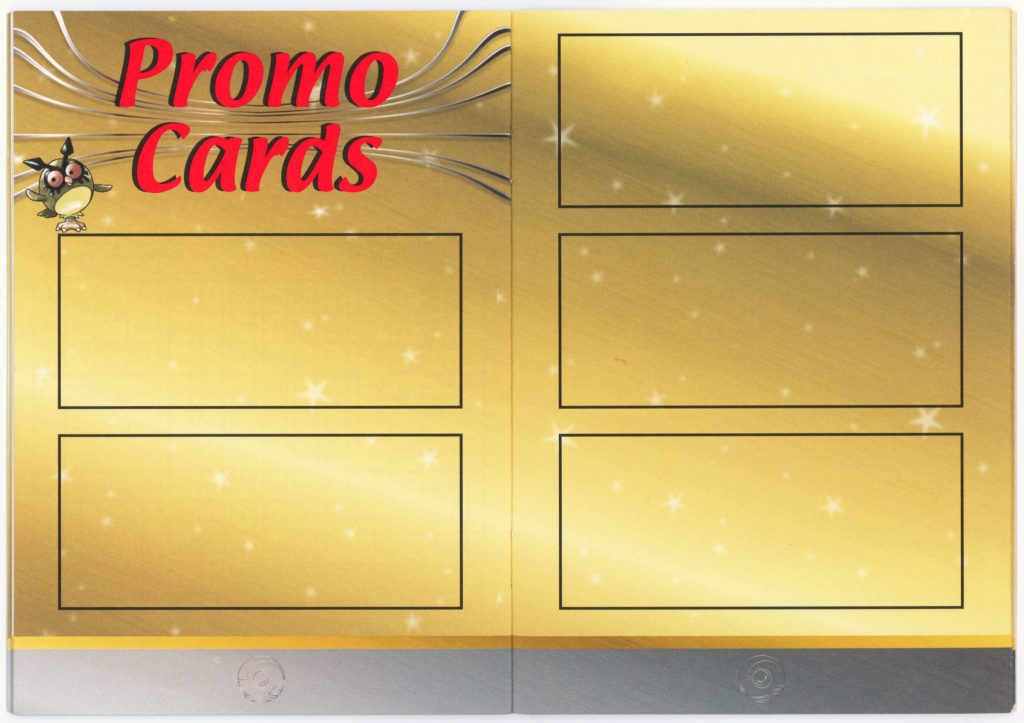
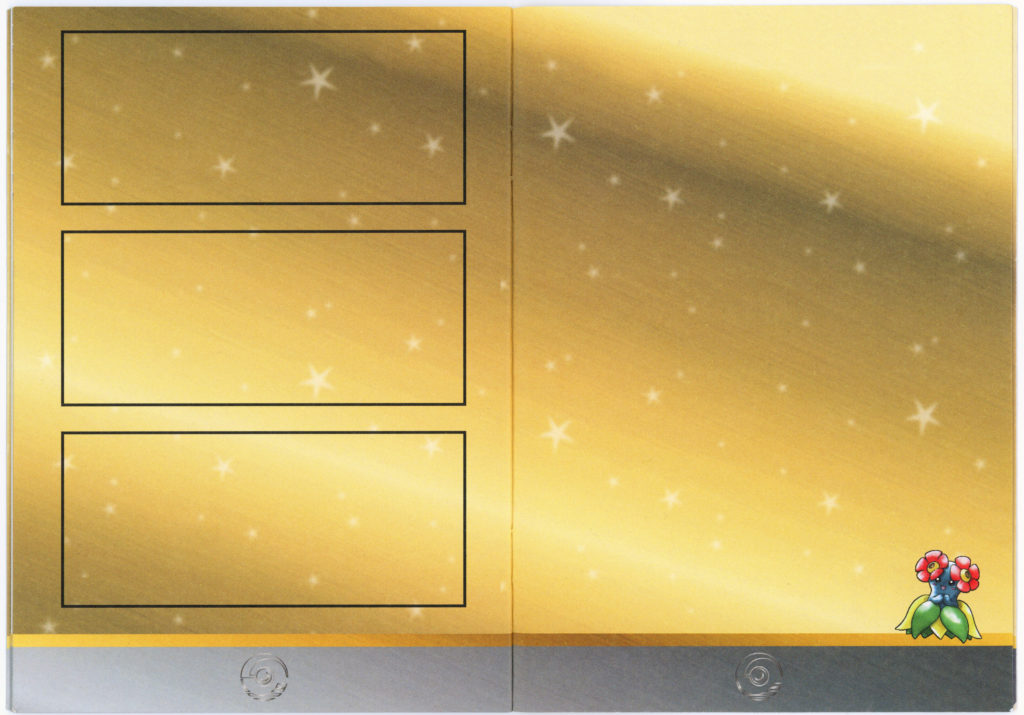
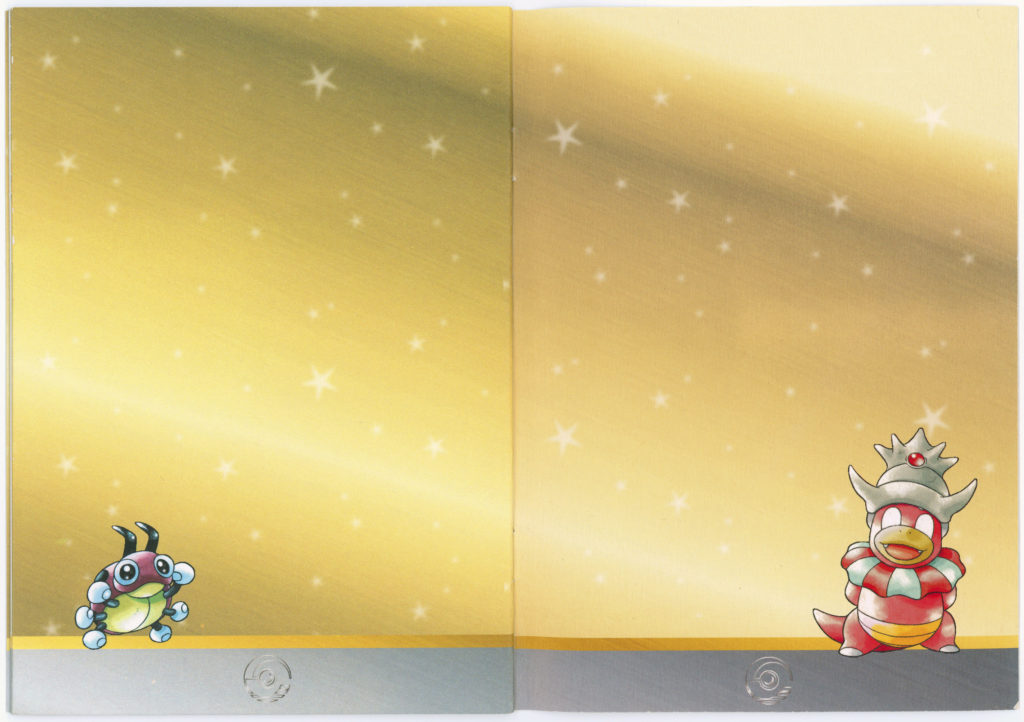
Badge (Reward) System
Within each season, there was a designated promo card. Players earned points towards earning badges and this promo card by a variety of ways.
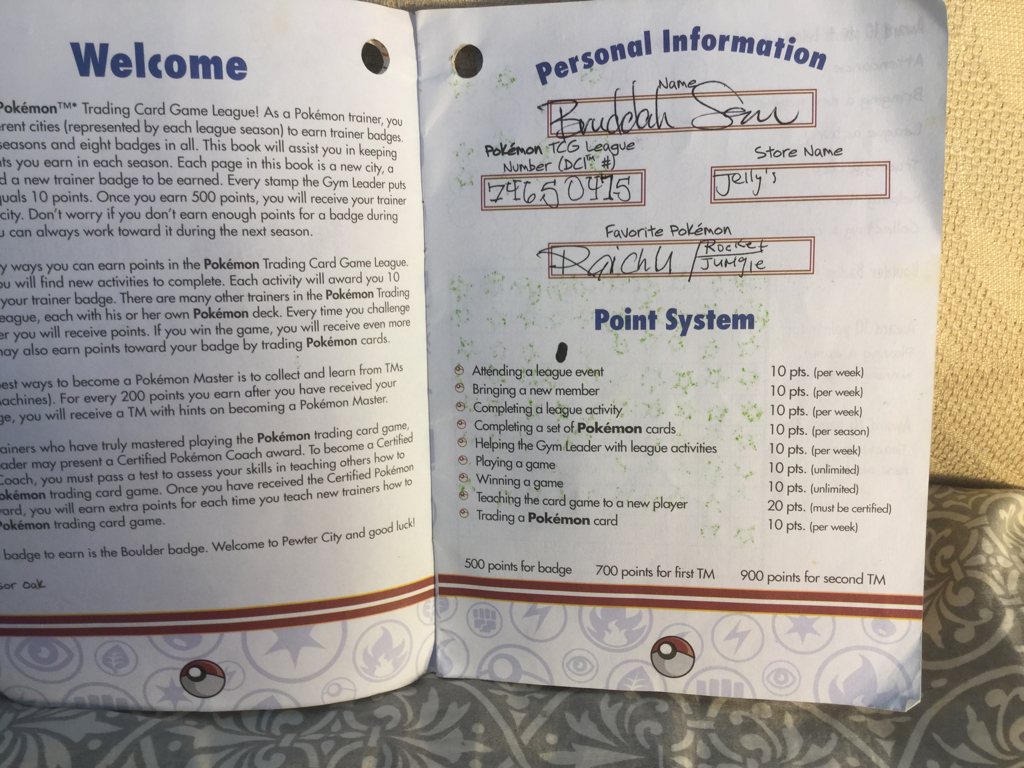
- Attendance (10 points)
- Bringing a new member (10 points)
- Playing games against each other (winners received 20 points, losers 10 points)
- Completing full sets of cards (10 points, this was discontinued by year 2)
- Completing Player Activities (10 points, see below for what these were)
- Helping the Gym Leader (10 points)
- Teaching the game to a new player (20 points, required certification–see below)
- Trade a Pokemon card (10 points)
These points were represented by stamps, with each stamp worth 10 points.
During the first year, badges were earned every 500 points, with Technical Machines (TMs) awarded every 200 after each badge.
TMs were essentially “advice” from the Gym Leader on how to be a better player, presented as stickers that could be placed into the badge book. Every badge had 2 associated TMs, leading to 16 in total. They were phased out after Year 1.
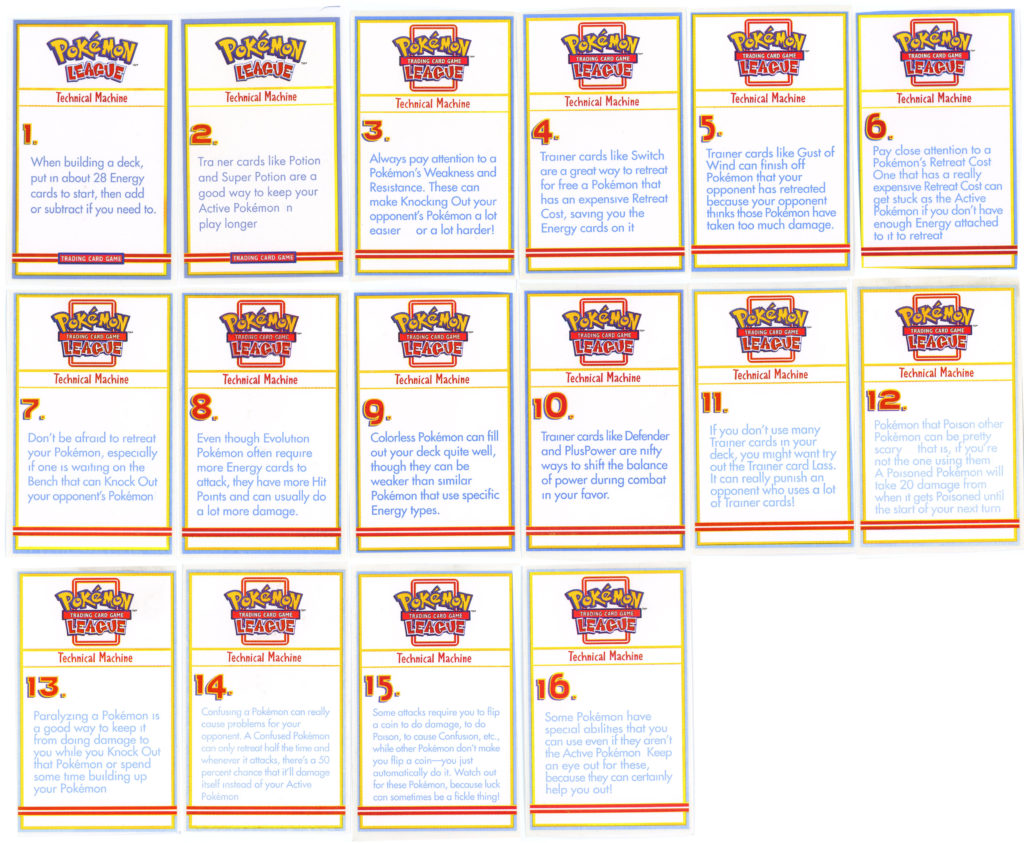
If players didn’t get enough points in a season to obtain a badge before the next season started, their points would roll over to the next season.

For year 2, the point system for badges changed. The first badge only took 400 points to get, but then the second would take an additional 430 points, and so on. TMs were done away with, and instead for every 50 points excess after a badge was obtained, 10 points would rollover to the next season.
- Season 1: Zephyr Badge — 400 Points
- Season 2: Hive Badge — 430 Points
- Season 3: Plain Badge — 480 Points
- Season 4: Fog Badge — 550 Points
- Season 5: Storm Badge — 650 Points
- Season 6: Mineral Badge — 680 Points
- Season 7: Glacier Badge — 930 Points
- Season 8: Rising Badge — 1100 Points
Challenges
During both Year 1 & 2, each gym would have a an associated challenge. Challenges imposed deckbuilding restrictions or handicaps meant to make matches more difficult. Completing enough games under these challenge restrictions would award the player with a special foil sticker.
Year 1 Challenges (Kanto)
During the first year, players were given paper Challenge sheets to track their progress on each gym’s challenge.
Winning 10 games with the challenge rules would earn them a sticker on this sheet. Tournament organizers would stamp the sheet with a stamp for each win, and affix the sticker once it was filled out.
| Location & Gym Leader | Sticker Image | Challenge |
|---|---|---|
| Pewter City – Brock |  | You must play with at least 5 stage 2 evolutions in your deck. |
| Cerulean City – Misty |  | Your opponent may draw 1 additional cards at the start of the match. |
| Vermilion City – Lt. Surge |  | Your opponent only plays with 4 Prize cards. |
| Celadon City – Erika |  | Your opponent may go through their deck and add any evolution to their hand at the start of the game |
| Fuchsia City – Koga |  | You may not use trainer cards. |
| Saffron City – Sabrina |  | You may not use exact duplicates of Pokemon, however, you may use two different levels of the same Pokemon. (Opponent can use duplicates) |
| Cinnabar Island – Blaine |  | When your opponent draws a prize card, they may look at all of their prize cards and choose which one to draw. |
| Viridian City – Giovanni |  | Your opponent may go through their deck and add a trainer card to their hand at the start of the game. Shuffle deck afterward. |
Year 2 Challenges (Johto)
In the second year of the Pokemon League, challenges continued again. However, the badge book had been redone so that each challenge was able to be tracked within the book, and the challenge badge stickers could be affixed on the back of the book.
| Location & Gym Leader | Sticker Image | Challenge |
|---|---|---|
| Violet City – Falkner | 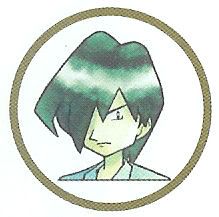 | You cannot use Colorless Pokemon or non-basic Energy cards. |
| Azalea Town – Bugsy | 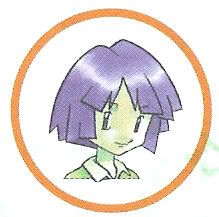 | Your opponent needs to collect 2 fewer Prizes to win. |
| Goldenrod City – Whitney | 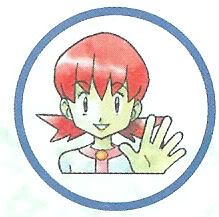 | Damage from your Pokemon is cut in half, rounded down. |
| Ecruteak City – Morty | 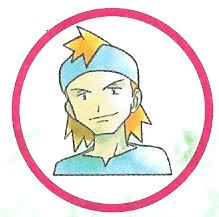 | You cannot retreat your Pokemon or play Trainers or effects that would make a different Pokemon your Active Pokemon. |
| Olivine City – Jasmine |  | Your opponent must be able to see your hand at all times. |
| Cianwood City – Chuck | 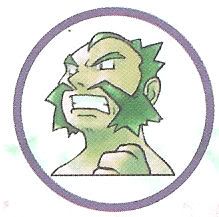 | Your opponent may go through his or her deck and add a Basic pokemon to his or her hand at the start of the game. Your opponent must shuffle his or her deck afterwards. |
| Mahogany Town – Pryce | 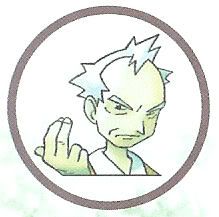 | Your Basic Pokemon cards cannot attack. Only your Evolved Pokemon can attack. |
| Blackthorn City – Clair | 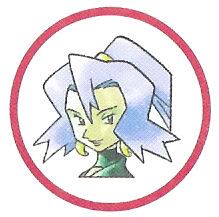 | Whenever you draw a Prize, you must immediately discard 1 card from your hand. |
Promo Cards
Promo cards were given away at certain point values as well. These were tracked via promo tracking stickers that were affixed on the interior of a player’s badge book. Players could earn up to 2 promo cards per tracker. One copy was given at 250 points, and a second at 500 points.
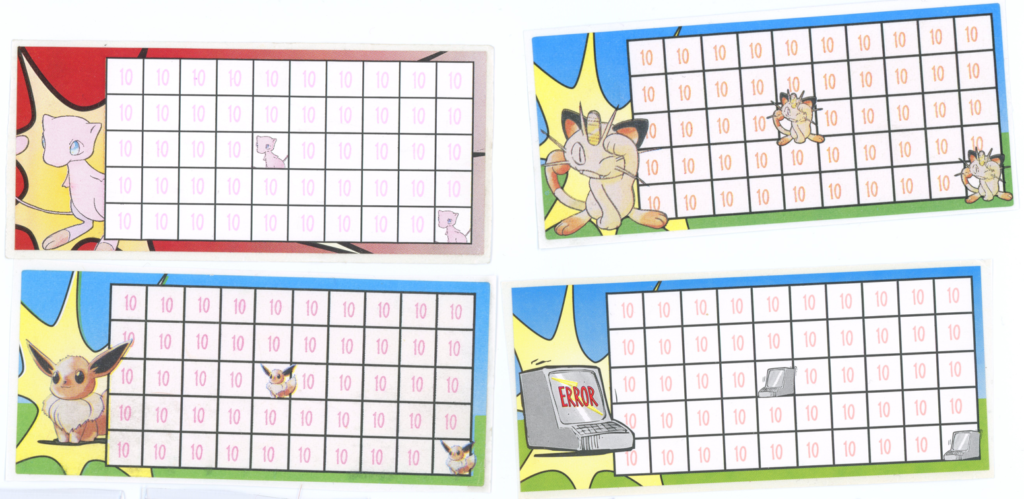
In year 2, these promo tracker stickers were given out again, but the badge book had dedicated pages with slots for each of these stickers.
Certification
Once per weekly session, Gym Leaders offered a “Certified Coach Test” to their players. Each League member was only allowed to try the test once per meeting. If they got 13 out of the 15 questions correct or better, they became a Certified Coach and received a special sticker to place on the back of their badge book.

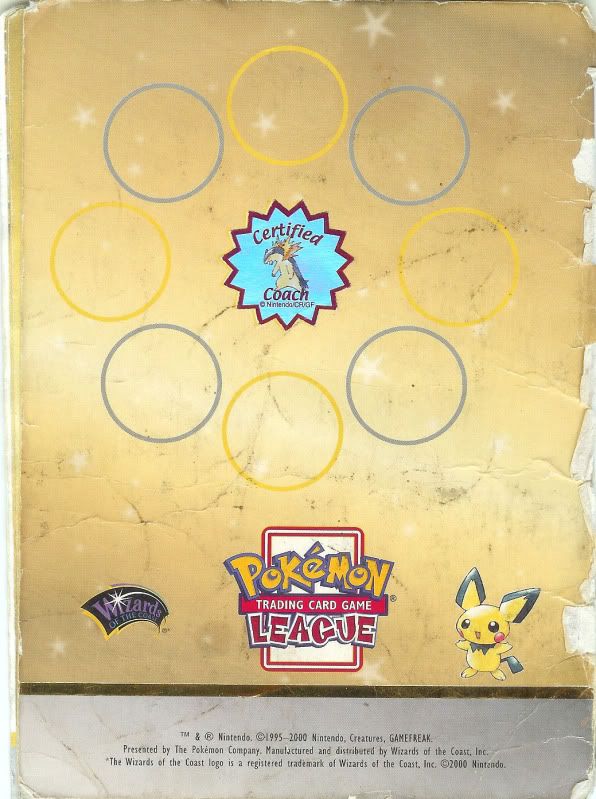
This sticker signified that the player was qualified to teach new players how to play the game. Each new player they taught would gain them 20 points.
Player League Activities
Each season had around 6 (one for each week of the season) League Activities for players to participate in. Gym leaders would be given a packet of the activities, and were instructed to photocopy more if needed. Activities were only available for players aged 10 and under, and were a way for younger kids to earn bonus points.
Activities usually consisted of puzzles or quizzes. Gym Leaders had access to an answer sheet as well.
“Create your own Pokemon Card” Activity
Starting in Year 2, there were special League Activities for players who earned at least up to the Zephyr Badge (the first badge). This Activity let players create their own Pokemon card, and the Gym Leader would then mail these sheets to Wizards, who would mail back an equivalent number of Happy Birthday Pikachu cards. This was the only League Activity sheet that Gym Leaders were instructed not to photocopy.
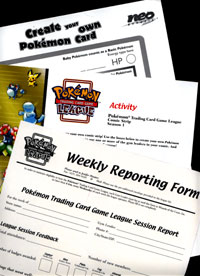
This activity was run multiple times during the year, and also was offered locally at Super Trainer Showdown events in America. For more information, and to see winning entries, read through the Wizards “Create your own Pokemon Card” article.
Promo Distribution
Year 1’s promos came out at regular cadences throughout the year, while Year 2’s promos were each tied to one of the 8 Gym badges.
Non-holo Mew Promo
To encourage players to join Pokemon Leagues as Year 1 kicked off in 2000, a non-holo Mew promo was distributed to all players who joined a league startign January 8, 2000. This was also advertised via the promo card packages given to attends of Pokemon: The First Movie. This mew would later be distributed in April 2000’s Pokemon League.
Year 1 Promos
Year 2 Promos
8 of the promos this year were each tied to a gym badge in the player’s badge book.
Zephyr Badge
Ecruteak City
Mineral Badge
Glacier Badge
Rising Badge
Lastly, during the summer of 2001, 3 additional Pikachu promos were distributed to League participants.
Successors
Wizards of the Coast’s Pokemon Leagues would be succeeded by the “Energize your Game” series in January 2002 (Year 3). This would be then followed up by Year 4’s “BattleZone” series, which would be cut short by Wizards losing the Pokemon TCG license in June 2003.
Sources
- https://www.youtube.com/watch?v=Zvi_4hxvswY
- https://www.ludkinscollectables.com/blog/brocks-trainer-deck-a-and-mistys-trainer-deck-b
- https://pokegym.net/community/index.php?threads/pokemon-tcg-and-pokemon-organized-play-timeline.14926/
- https://www.ign.com/articles/1999/07/08/pokemon-summer-training-tour-kicks-off
- https://bulbapedia.bulbagarden.net/wiki/Pok%C3%A9mon_League_(TCG)#Discontinued_rewards
- https://www.pojo.com/Features/0101/season2.html
- https://sites.google.com/site/virginiapokemon/league/history/johto
- https://web.archive.org/web/20011031230240/http://www.wizards.com/pokemon/main.asp?x=ss20010522a



